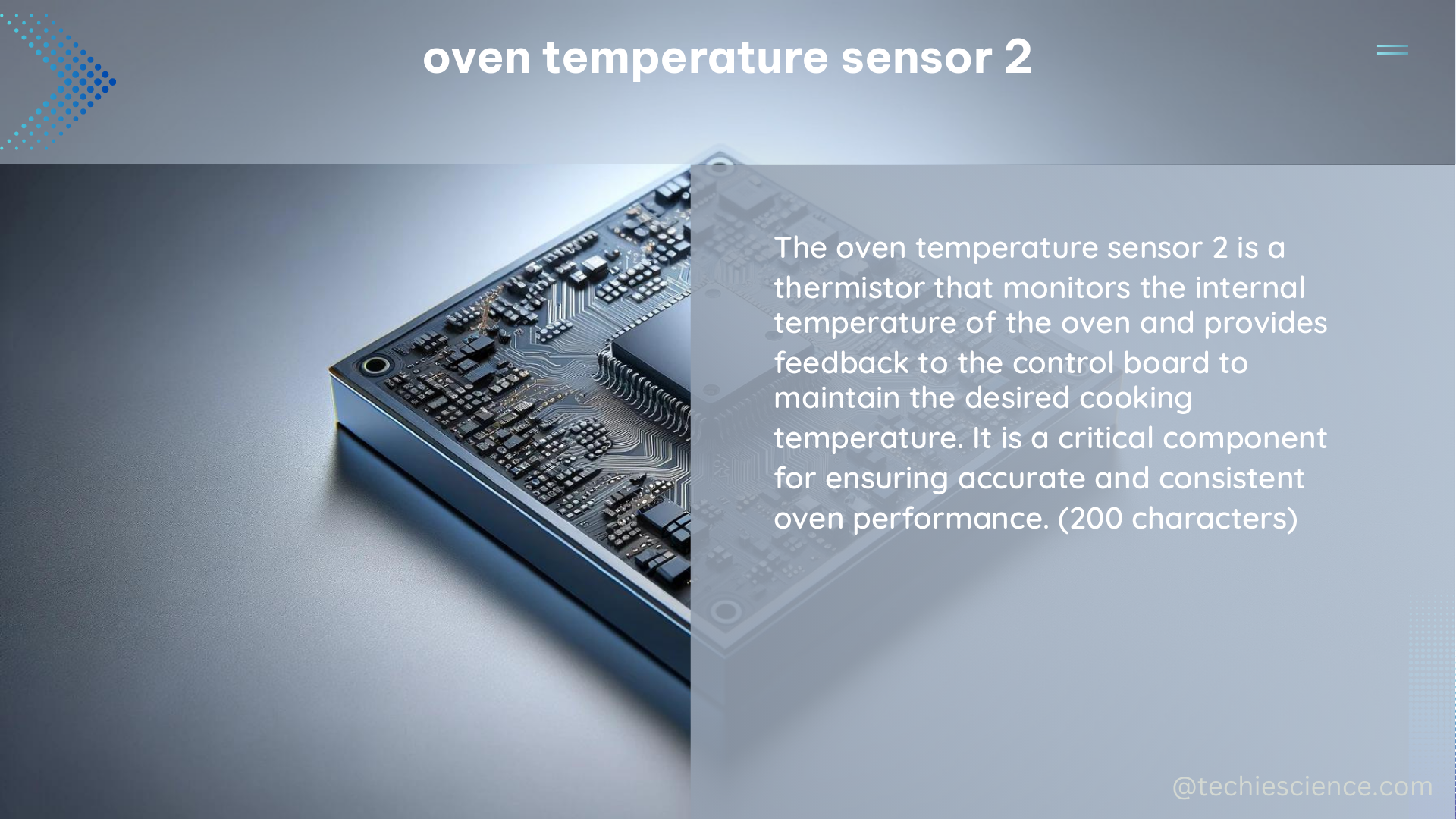The oven temperature sensor 2 is a critical component in regulating the temperature of ovens, ensuring efficient and safe cooking. This sensor is designed to withstand high temperatures and maintain its accuracy over time, providing precise temperature readings to the oven’s control system.
Technical Specifications of Oven Temperature Sensor 2
The oven temperature sensor 2 boasts impressive technical specifications, including:
- Temperature Range: Up to 500°C (932°F)
- Response Time: Less than 60 seconds
- Accuracy: ±1% of the full scale
The sensor is typically made of a thermocouple or resistance temperature detector (RTD) that converts temperature into an electrical signal. This electrical signal is then processed by the oven’s control system to regulate the temperature, ensuring optimal cooking conditions.
Calibration and Maintenance

To ensure the accuracy of the oven temperature sensor 2, regular calibration is essential. This process involves comparing the sensor’s readings to a known temperature standard, allowing for the identification and correction of any errors or drifts in the sensor’s accuracy.
Calibration can be performed using a variety of methods, including:
-
Calibration Bath: A calibration bath is a temperature-controlled liquid bath that provides a stable and uniform temperature environment. By submerging the oven temperature sensor 2 in the bath and comparing its readings to the known temperature, the sensor’s accuracy can be verified and adjusted as needed.
-
Dry Block Calibrator: A dry block calibrator is a portable device that uses a solid metal block to simulate a specific temperature. The oven temperature sensor 2 is inserted into the block, and its readings are compared to the known temperature to ensure accuracy.
In addition to calibration, regular maintenance is crucial for the longevity of the oven temperature sensor 2. This includes:
- Cleaning: Regularly cleaning the sensor and its surrounding area to remove any dirt or debris that could interfere with its accuracy.
- Wiring and Connections: Checking the sensor’s wiring and connections for any signs of damage or wear, ensuring a secure and reliable connection.
DIY Oven Temperature Sensor 2 Replacement
For those interested in DIY repairs, it is possible to replace the oven temperature sensor 2 yourself. However, it is essential to follow the manufacturer’s instructions carefully and ensure that you have the necessary tools and skills. The process typically involves:
- Disconnecting the Oven’s Power Supply: Ensure the oven is completely powered off and unplugged before attempting any repairs.
- Removing the Sensor’s Cover: Locate the sensor’s cover and carefully remove it, taking note of any wiring or connections.
- Detaching the Old Sensor: Carefully disconnect the old sensor, taking care not to damage any surrounding components.
- Installing the New Sensor: Carefully insert the new sensor and reconnect any wiring or connections, ensuring a secure and proper fit.
- Reassembling the Oven: Replace the sensor’s cover and any other components that were removed during the process.
- Powering On and Testing: Reconnect the oven’s power supply and test the new sensor to ensure it is functioning correctly.
It is important to note that the specific steps may vary depending on the oven model and manufacturer. Always refer to the manufacturer’s instructions and safety guidelines to ensure a successful and safe DIY repair.
Conclusion
The oven temperature sensor 2 is a crucial component in regulating the temperature of ovens, ensuring efficient and safe cooking. By understanding its technical specifications, calibration requirements, and maintenance needs, you can ensure optimal oven performance and extend the lifespan of this essential component.
For those interested in DIY repairs, it is possible to replace the oven temperature sensor 2 yourself, but it is essential to follow the manufacturer’s instructions carefully and ensure that you have the necessary tools and skills.
References:
- DOE Cooking Products Test Procedure
- JEDEC Standard for Semiconductor Terminology
- Renesas Electronics Corporation JEDEC Definition

The lambdageeks.com Core SME Team is a group of experienced subject matter experts from diverse scientific and technical fields including Physics, Chemistry, Technology,Electronics & Electrical Engineering, Automotive, Mechanical Engineering. Our team collaborates to create high-quality, well-researched articles on a wide range of science and technology topics for the lambdageeks.com website.
All Our Senior SME are having more than 7 Years of experience in the respective fields . They are either Working Industry Professionals or assocaited With different Universities. Refer Our Authors Page to get to know About our Core SMEs.